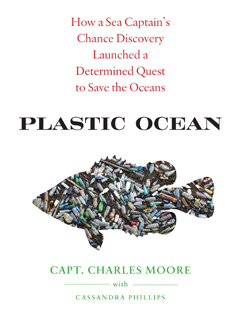 Avery, 358 pp., $26 written by Capt. Charles Moore with Cassandra Phillips reviewed by Katherine SilkaitisWhen Capt. Charles Moore set sail from Honolulu in 1997, he and his crew stumbled upon a floating phenomenon. Estimated at two million square miles, the North Pacific Subtropical Gyre is home to nearly three million tons of plastic debris. Here marine life share space with fishing nets, glow sticks and oyster spacer pipes as well as more mundane detritus of modern life, like pens, coffee stirrers and plastic bags.
Avery, 358 pp., $26 written by Capt. Charles Moore with Cassandra Phillips reviewed by Katherine SilkaitisWhen Capt. Charles Moore set sail from Honolulu in 1997, he and his crew stumbled upon a floating phenomenon. Estimated at two million square miles, the North Pacific Subtropical Gyre is home to nearly three million tons of plastic debris. Here marine life share space with fishing nets, glow sticks and oyster spacer pipes as well as more mundane detritus of modern life, like pens, coffee stirrers and plastic bags.
In Plastic Ocean, Moore and co-author Cassandra Phillips use the Gyre’s discovery to talk about the scary side of plastics. They discuss the chemical effects of plastic breakdown—which happens more slowly in cool ocean waters than on land, adding to its longevity—and the potential effects on human and animal health.
In some ways, however, the most distressing aspects of the book are the issues of plastic production, use and disposal. Moore finds recycling a charade and argues that producers have left consumers responsible for disposal. This becomes a major point in the book and it’s what the authors of Plastic Ocean want to inspire readers to address.



